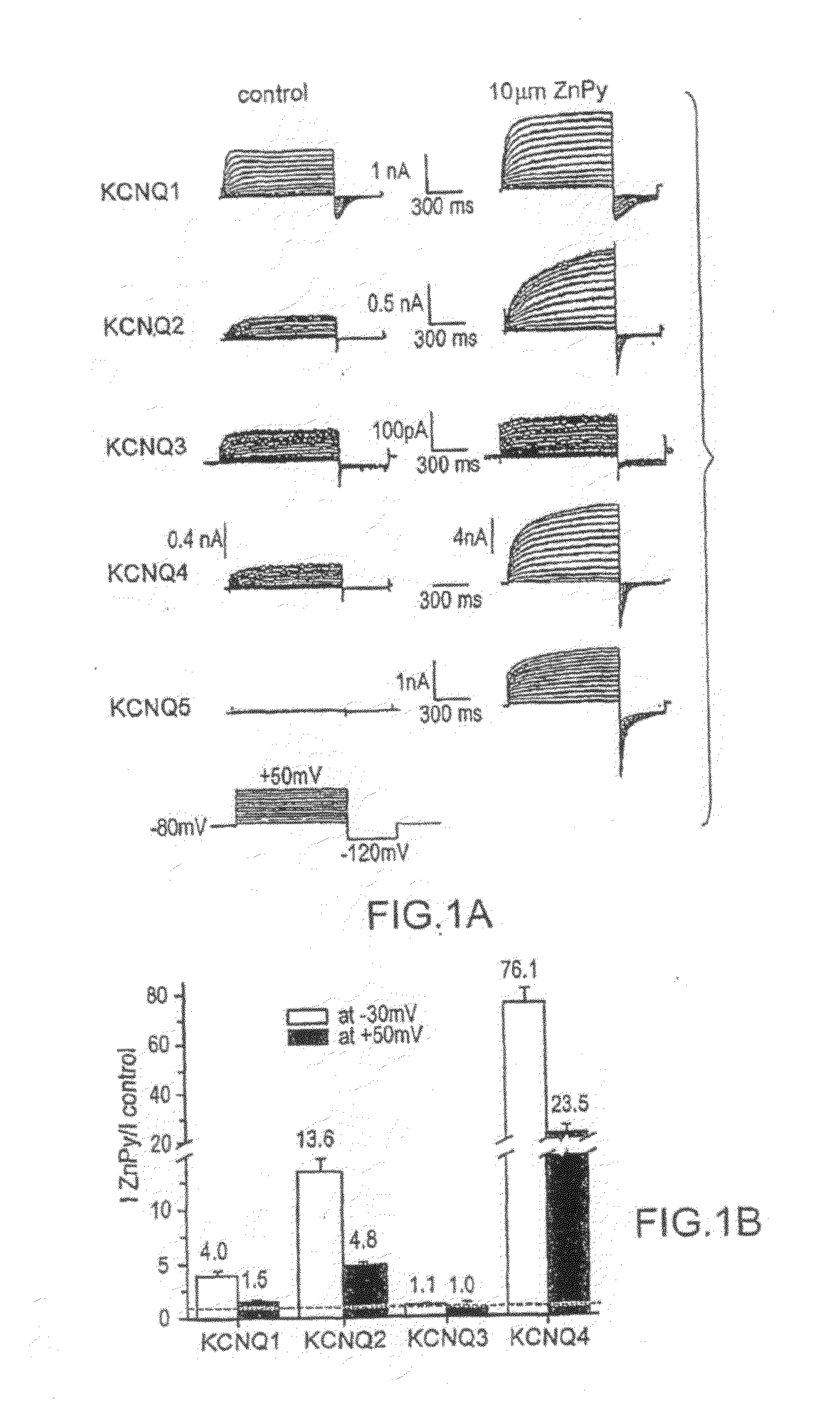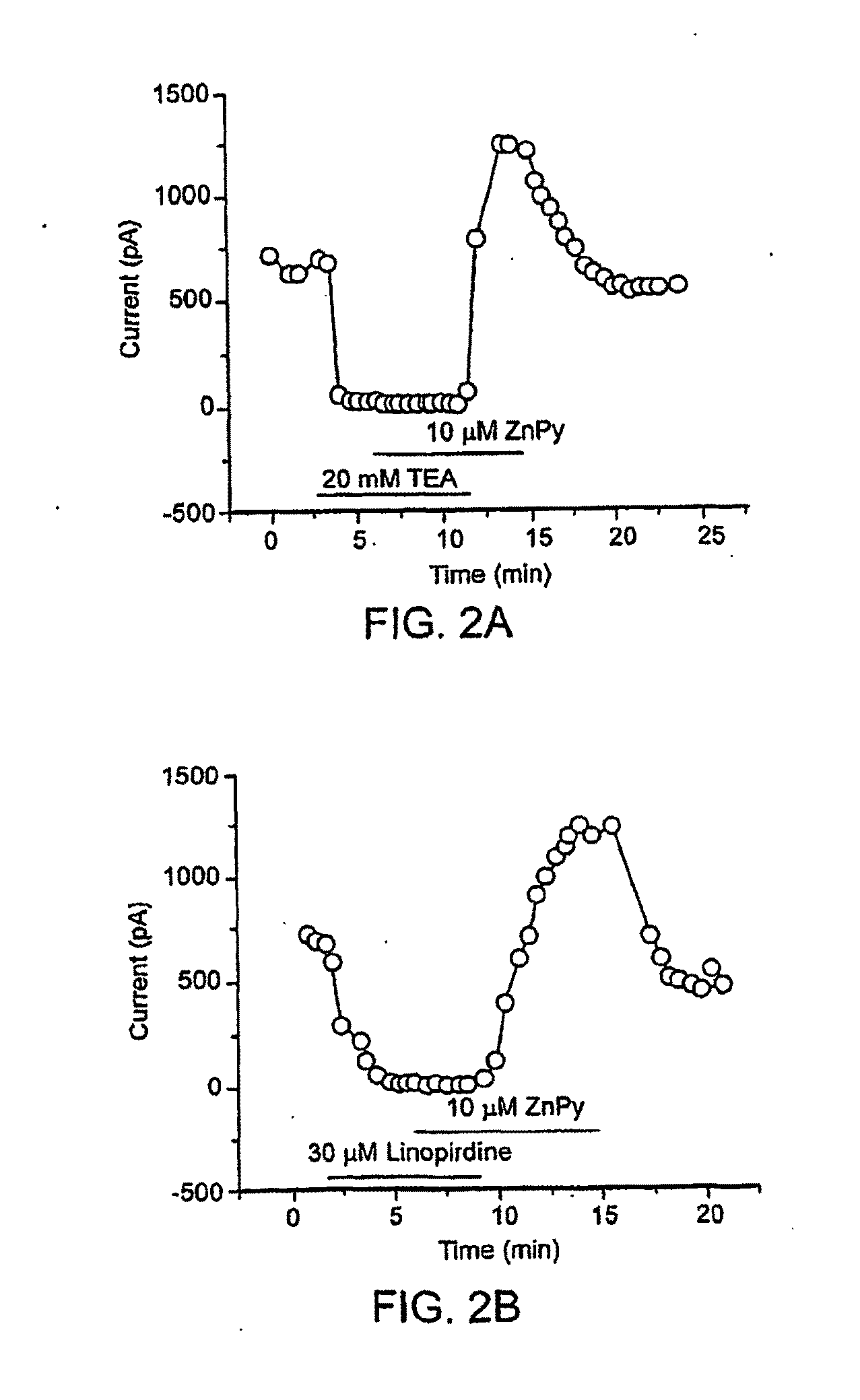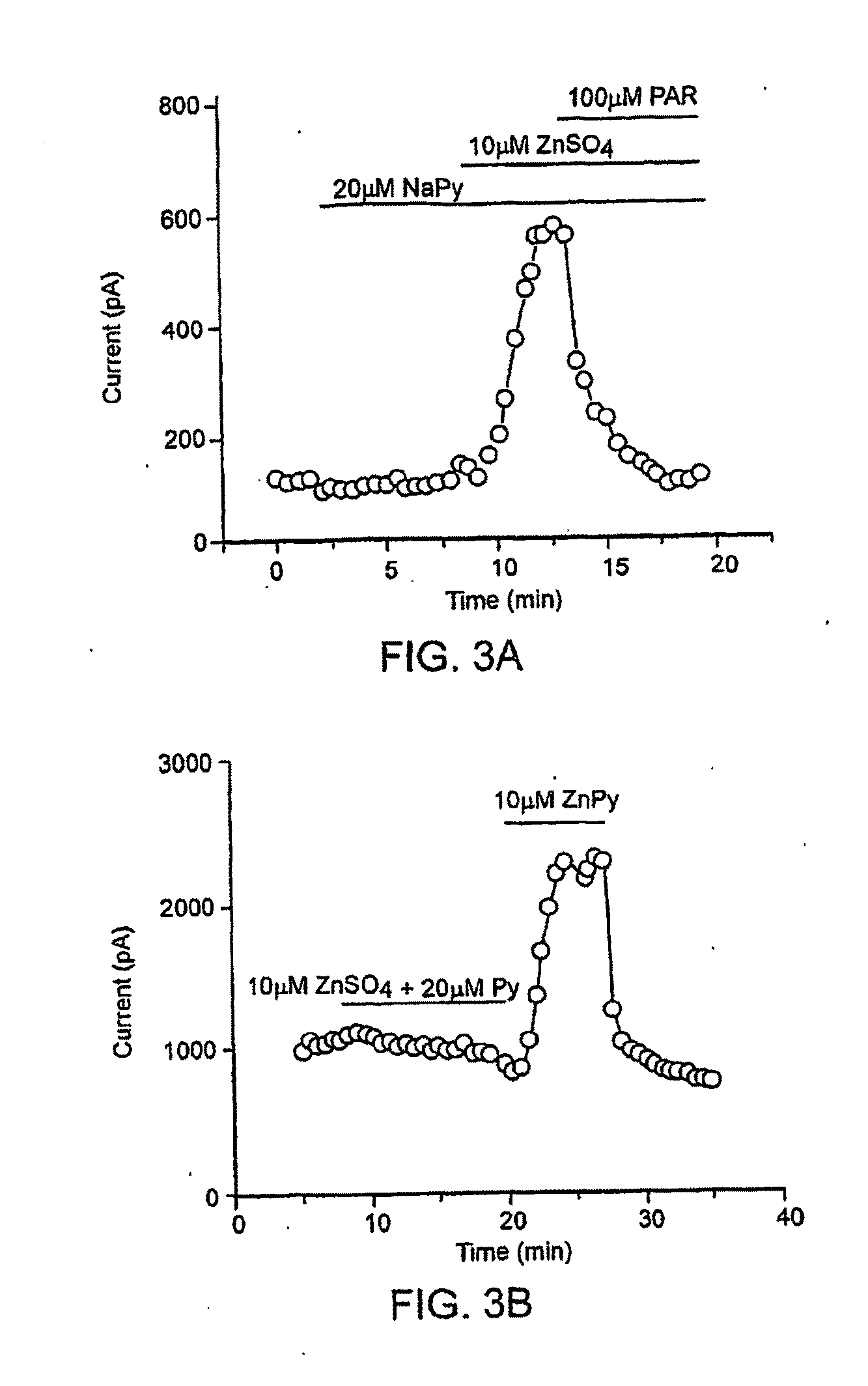Method of Treating Kcnq Related Disorders Using Organozinc Compounds
- Summary
- Abstract
- Description
- Claims
- Application Information
AI Technical Summary
Benefits of technology
Problems solved by technology
Method used
Image
Examples
example 1
[0243]Cell culture and transient transfection—Chinese Hamster Ovary (CHO) cells were grown in 50 / 50 DMEM / F12 (Cellgro) with 10% FBS (Gibco), 100 U / ml penicillin (Cellgro), 100 μg / ml streptomycin (Cellgro) and 2 mM L-glutamine (Gibco). At 24 hours before transfection, cells were split and plated in 60 mm dishes and were transfected with Lipofectamine2000™ reagent (Invitrogen) according to the manufacturer's instruction. At 24 hours after transfection, cells were split and re-plated onto coverslips coated with poly-L-lysine (Sigma). Plasmid expressing CD4 cDNA as a marker was cotransfected with the channel cDNAs of hKCNQ1 (from Dr. Michael Sanguinetti), hKCNQ4 (from Dr. Vitya Vardanyan), rKCNQ2, rKCNQ3, and hKCNQ5 (from Drs. David McKinnon, Mark Shapiro, and Thomas Jentsch). Prior to recording, anti-CD4 Dynabeads (Dynal. Biotech. Inc.) were added into the medium to allow for identification of the transfected cells. Stable lines expressing Kv2.1, hERG, and Kv4.2 were generated by stand...
example 2
[0244]KCNQ2 screen—HEK 293 cells stably expressing rat KCNQ2 were resuspended in DMEM / F12 medium and plated at a density of 4×104 / well in poly-L-Lysine coated 96-well plates. Cells were then incubated at 37° C. with 5% CO2 overnight. 30 μl / well DMEM / F12 medium containing 30 mM RbCl was added to the cells the next day, followed by incubation for an additional 3 hours. Cell plating and reagent dispensing were done using a Multidrop 384 dispenser (Thermo Electron Corporation).
[0245]Compound addition and Rb+ efflux assay were programmed and performed on a Cybi-Well™ system and Tekbench liquid handling system (Tekcel Inc., Hopkinton, Mass.), respectively. Briefly, 0.9 μl / each of the 200× compound solution was added to 80 wells of each cell plate. To ensure assay reproducibility, 0.9 μl of 5% DMSO solution was added to each well in the first column of each cell plate along with the compound solutions; these wells were used as negative controls. Final DMSO concentration in the cell medium ...
example 3
[0246]Mutagenesis—Starting from KCNQ cDNAs, the KCNQ2 point mutants were constructed by recombinant PCR and verified by sequencing.
PUM
| Property | Measurement | Unit |
|---|---|---|
| Dimensionless property | aaaaa | aaaaa |
| Dimensionless property | aaaaa | aaaaa |
| Dimensionless property | aaaaa | aaaaa |
Abstract
Description
Claims
Application Information
 Login to View More
Login to View More - R&D
- Intellectual Property
- Life Sciences
- Materials
- Tech Scout
- Unparalleled Data Quality
- Higher Quality Content
- 60% Fewer Hallucinations
Browse by: Latest US Patents, China's latest patents, Technical Efficacy Thesaurus, Application Domain, Technology Topic, Popular Technical Reports.
© 2025 PatSnap. All rights reserved.Legal|Privacy policy|Modern Slavery Act Transparency Statement|Sitemap|About US| Contact US: help@patsnap.com



